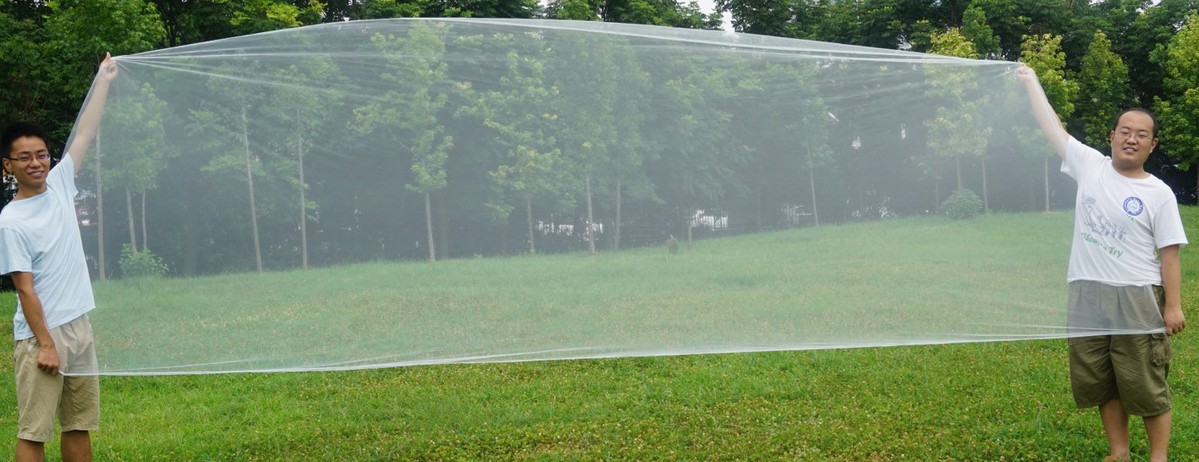New window material developed to filter haze and adjust light


Chinese scientists have recently developed a large-area flexible transparent smart window that can not only adjust indoor light intensity but also capture fine particulate matter (PM2.5).
A paper on this meaningful invention has been published by iScience, an open-access journal of the renowned Cell Press headquartered in Massachusetts.
Professor Yu Shuhong, a material scientist at the University of Science and Technology of China, and his team managed to develop a 7.5-square-meter sheet with mainly silver nano material and nylon fabric with expected properties.
“Coating a nylon mesh with Argentum nanowire, we get a combination of nylon mesh and Ag nanowires with the new properties,” said Liu Jianwei, associate professor at the university and corresponding author of the paper.
By giving it an electrical current with a voltage of 10 watts, the material is able to stop as high as 99.65% of fine particulate matter, or PM2.5, from getting indoors, while another adjustable current changes its transparency by darkening or lightening the color of the macromolecule particles adhering to the fabric.
To make a sheet in the experimented size costs $15.03 and takes 20 minutes, and Liu believes making larger ones with the same efficiency is very possible. Space in the lab, based in Hefei, capital of East China’s Anhui province, permits hardly any larger sizes.
The paper was published on iScience’s official website on Feb 7, while the print edition will come out on Feb 22.
- Liaoning fire: Report urges legal action against restaurant operator and seven others
- Historical Han Dynasty slips go on display in Hohhot
- Shanghai unveils steps to build sci-tech innovation corridor in Yangtze River Delta
- Xiangchao concludes with Yongzhou claiming championship
- Answers
- CPC leadership meeting urges steadfast implementation of eight-point decision on improving conduct





































